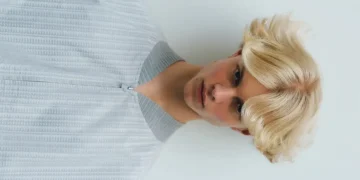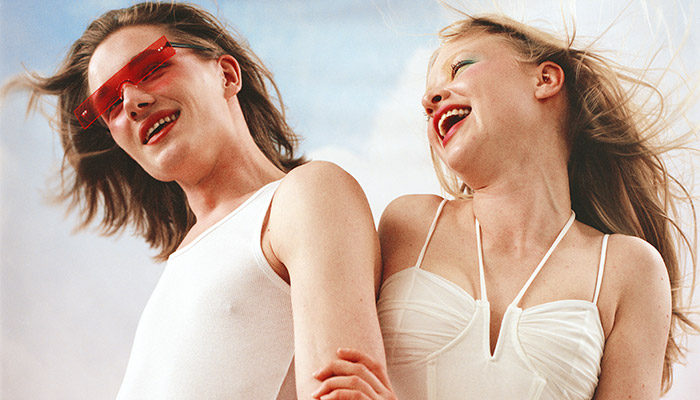
Let’s be honest, most guys stick to one hair routine. Shampoo (maybe), conditioner (if it’s on sale), and whatever styling product is left over from last year. It’s simple, it kind of works, and it completely ignores the fact that the weather is doing its own thing outside.
But here’s the catch: your hair actually cares about the weather. Just like your skin dries out in winter or gets oilier in summer, your scalp reacts to what’s happening outside. Ignore that, and you end up with flakes, frizz, or hair that feels like straw.
So think of your hair the way you think of your wardrobe. You don’t wear the same jacket in July and January. If you do, we really do need to talk.
Winter: When Your Head Becomes a Static Experiment
Cold air outside, dry heating inside. It’s a setup designed to wreck your scalp. Suddenly you’ve got flakes falling like snow, static that makes your hair stand straight up, and dryness that makes it feel like it might snap.
To handle it, switch to a moisturizing or anti‑dandruff shampoo if you’re seeing flakes. Look for zinc pyrithione. It’s not just a science‑y word, it actually helps calm the scalp. Turn the water temperature down in the shower as well. Those extra‑hot showers feel great, but they strip your scalp faster than you think.
RELATED: Latest Beauty Stories on DSCENE
Conditioner is non‑negotiable in winter, no matter how short your hair is. If heavy formulas make you feel greasy, go for a lightweight, silicone‑free conditioner. After drying, a few drops of argan or jojoba oil rubbed between your palms and smoothed over the lengths can calm static and add a natural, not‑greasy shine.
If you wear hats a lot, pay attention to the fabric. Wool and cotton create friction, which leads to frizz and breakage. A silk or satin lining sounds fancy, but it is really just reducing friction. That is not a luxury detail, it is basic physics.
Spring: The Awkward Reset Season
Spring is that in‑between phase. Your scalp is still recovering from winter, but humidity is creeping back in. One day is warm and sunny, the next feels like November again.
Start by resetting your scalp. Use a clarifying shampoo every couple of weeks to remove buildup from heavier winter products. Don’t treat it like a daily shampoo. Once or twice a month is enough. Treat your scalp the way you treat your face. Massage in a lightweight scalp serum or a few drops of a light oil to wake it up after months of dry air and product.
This is also the time to get a trim. All those split ends from winter? Cut them off and start fresh. Your hair will instantly look more intentional, even if you are not changing the style.

Product‑wise, it is time to retire the heavy creams you relied on in winter. In spring they just weigh your hair down. Switch to lighter mousses or gels that give movement without making your hair collapse.
If your scalp starts itching in spring, it is not always dandruff. It can be allergies. Look for products with soothing ingredients like aloe or oatmeal to calm things down instead of jumping straight to the harshest anti‑dandruff formula.
Summer: Surviving the Triple Threat
Sweat, sun, and salt water are not your hair’s favorite things. UV rays dry out and fade color, chlorine and salt rough up the hair cuticle, and constant sweating does your scalp no favors.
You will probably need to shampoo more often in summer, but keep it gentle. Look for a mild formula that removes sweat and dirt without stripping every bit of natural oil. Condition every time you wash. Sun and salt pull moisture out of your hair quickly, so skipping conditioner in summer is asking for that dry, crunchy feeling.
After swimming, rinse your hair with fresh water as soon as you can. Do not let chlorine or salt sit and bake in the sun. Even a quick rinse in a beach or pool shower makes a big difference. A hydrating conditioner or leave‑in spray after swimming helps your hair feel like hair again, not dried pasta.
Protect your scalp the way you protect your face. A burned part line is painful and looks worse than you think. Use a spray‑on SPF made for hair and scalp, or wear a breathable cotton cap. Avoid plastic‑lined caps that trap heat and sweat.
As tempting as it is to blow‑dry and fully style your hair in 90° heat, give it a break when you can. Your hair is already dealing with sun and sweat. Let it air dry sometimes and keep the heat tools for when you actually need them.
Fall: Time for Damage Control
Fall is recovery season. This is when you undo what summer did. Switch to strengthening products. Look for shampoos and conditioners with keratin, biotin, or amino acids. These are not just marketing terms. They help support damaged hair and make it feel stronger over time.
Check in with your scalp as the air gets cooler and drier again. If you start to see flakes or feel tightness, bring back a more hydrating shampoo or a scalp treatment before it turns into a full‑on winter situation.
Ease up on styling where you can. Your hair has had heat, sun, and product all summer. Dial back the heavy styling products, cut down on hot tools, and let your natural texture show a bit more.
What you eat matters here too. Omega‑3s, zinc, and vitamin E support hair health from the inside. Think avocados, nuts, seeds, and fish. It is not a magic cure, but it does help.
If you notice more hair in the shower drain in fall, don’t panic. Seasonal shedding is normal. As long as your scalp is healthy and you are not seeing bald patches, it usually settles down.

Rules That Don’t Change With the Weather
Some basics stay the same all year. Conditioner is not optional, even if you have a buzz cut. Your scalp and hair need moisture. If your hair feels “too soft” after conditioner, you are probably using too much or the wrong formula, not proving that conditioner is a bad idea.
Match your shampoo to your scalp, not your hair length. Oily scalp? Look for a balancing or purifying formula. Dry, tight scalp? Choose something hydrating and gentle. Grabbing whatever bottle is on sale is how you end up with the wrong product for your actual needs.
Get a trim every few weeks or at least every couple of months, depending on how fast your hair grows and how sharp you want it to look. Regular trims keep your hair looking intentional instead of overgrown.
Use a heat protectant before you blow‑dry or use hot tools. If you are blasting your hair with high heat with no protection, you will eventually end up with rough, straw‑like ends. And drink water. Your scalp is skin. If you are dehydrated, your scalp and hair will show it.
Seasonal Doesn’t Mean Complicated
Your hair does not need a 10‑step routine to survive different seasons. It just needs you to stop pretending the weather doesn’t matter. Each season throws something different at your scalp and hair: dryness, humidity, UV, cold, sweat. You do not need a whole new bathroom shelf for each one, just small adjustments.
Think of it like switching to winter tires or using a different sunscreen in summer. It is basic maintenance that prevents bigger problems later.
With a few tweaks to your products and habits, your scalp stays calmer and your hair behaves better. By this time next year, you will not just be getting through whatever the weather throws at you. You will be the guy whose hair quietly looks better than everyone else’s. And that is an easy win.



















